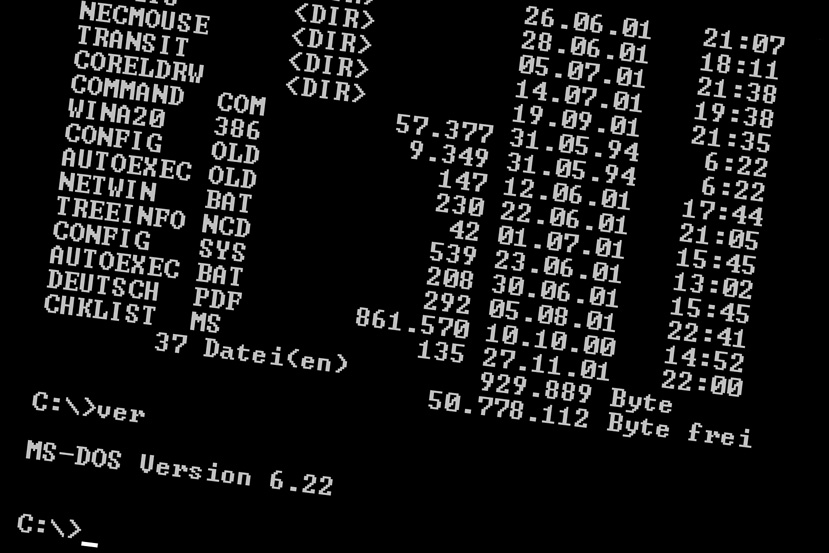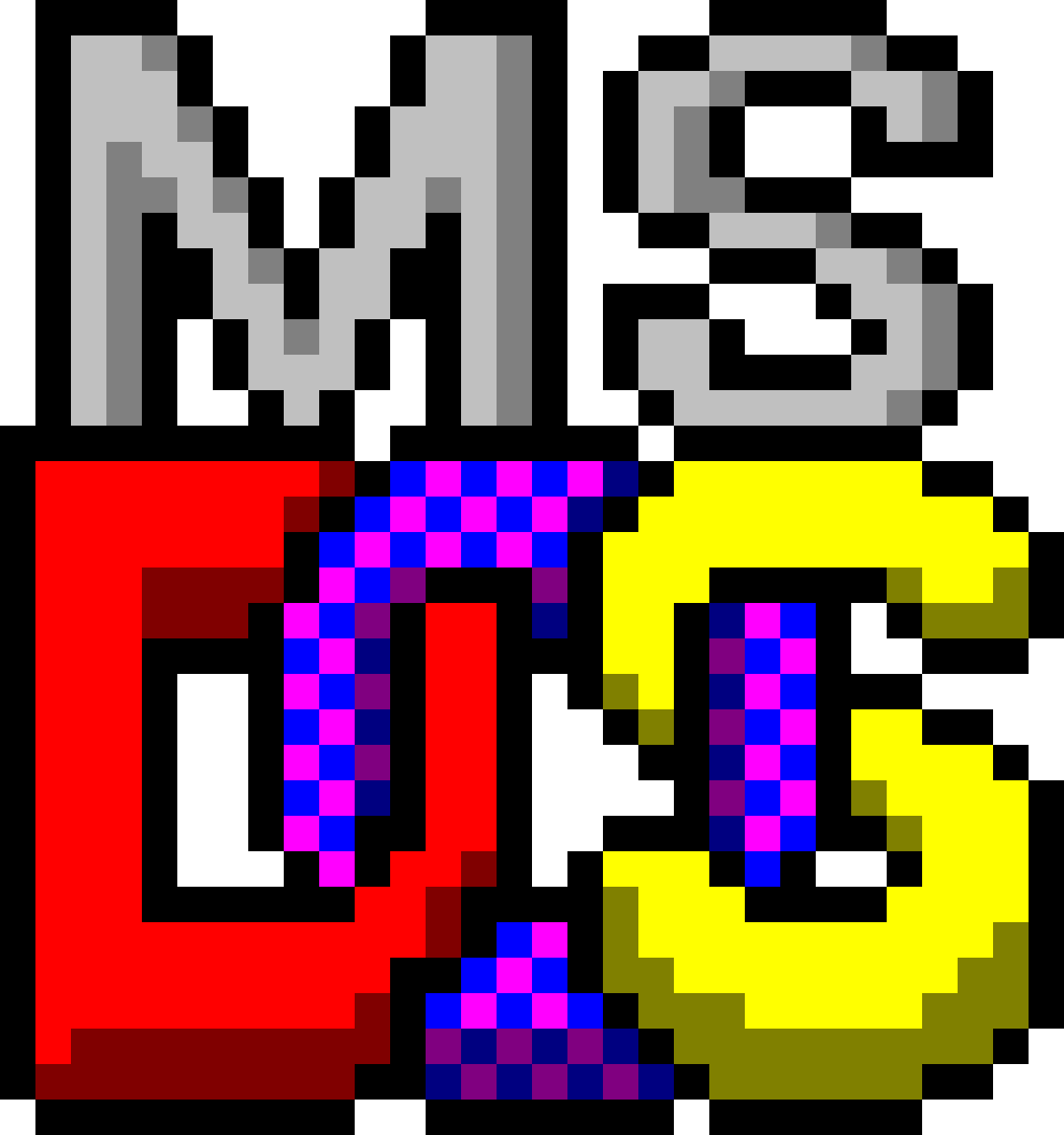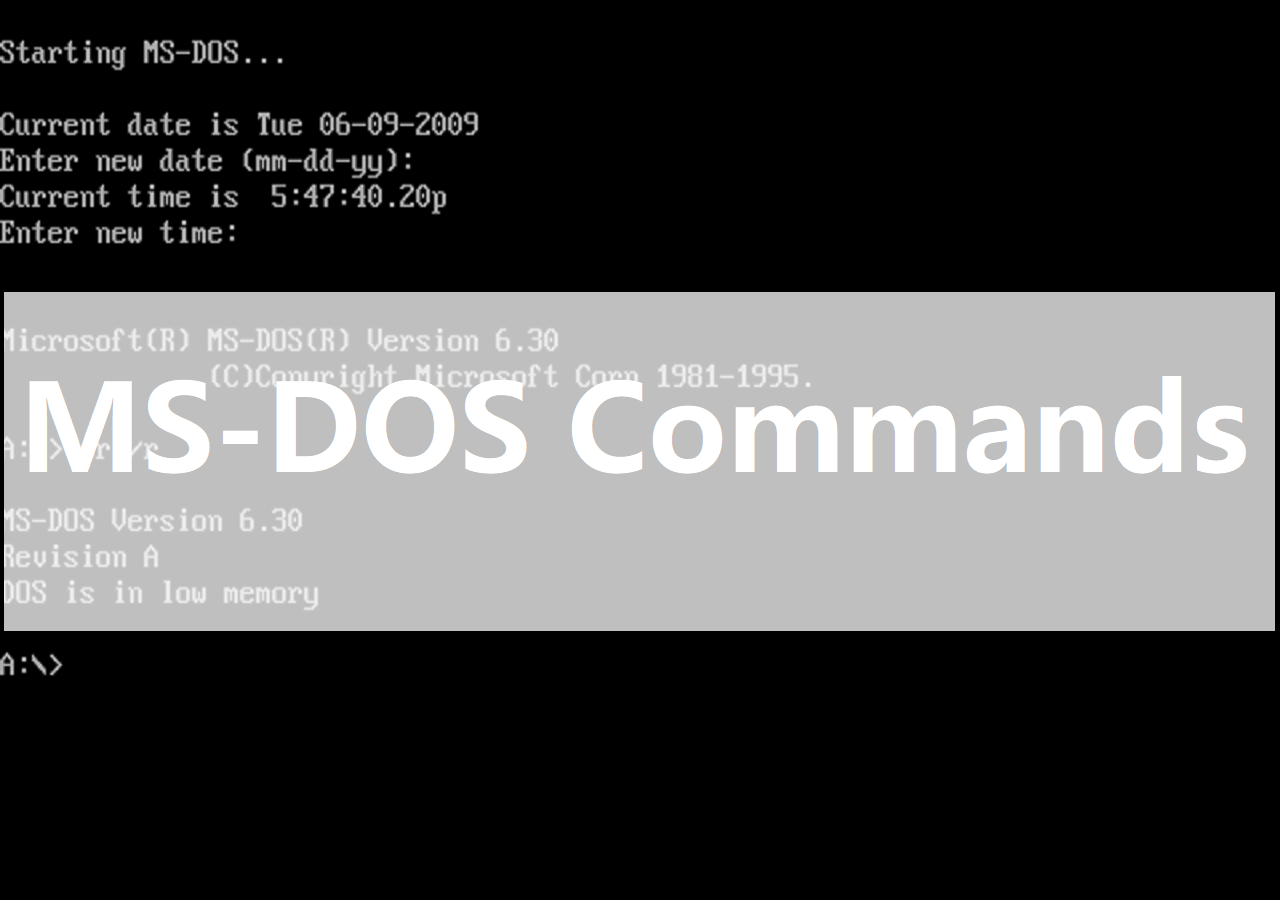DOS History: From Seattle Computer's Quick Start To PC Dominance!
Have you ever stopped to consider the unsung heroes of the computing world, the operating systems that paved the way for the sleek, user-friendly interfaces we enjoy today? These foundational systems, often built with minimal resources and maximum ingenuity, represent the very bedrock upon which modern technology stands.
The early days of personal computing were marked by a frantic race to create efficient and accessible operating systems. Among these contenders emerged systems crafted with a "quick and dirty" approach, born out of necessity and a relentless pursuit of functionality. One notable example is the operating system created by Seattle Computer Products, a company that played a pivotal role in the development of early PC technology. These systems, while perhaps lacking the polish of later iterations, were instrumental in bringing computing power to a wider audience, empowering individuals and businesses alike.
| Category | Information |
|---|---|
| Name | Seattle Computer Products Operating System |
| Type | Disk Operating System (DOS) |
| Developer | Seattle Computer Products |
| Era | Early 1980s |
| Impact | Paved the way for other DOS systems, including MS-DOS |
| Key Features | Designed for speed and efficiency on limited hardware |
| Legacy | Demonstrates the rapid evolution of operating systems in the early PC era |
| Reference | Seattle Computer Products Wikipedia Page |
These pioneering operating systems, designed for specific hardware configurations and limited resources, stand in stark contrast to the sprawling, feature-rich operating systems we use today. They were often characterized by a command-line interface, requiring users to interact with the computer by typing in specific instructions. This demanded a level of technical proficiency that is largely absent in modern user interfaces, which rely on intuitive graphical elements and point-and-click navigation. The underlying philosophy of these early systems often prioritized efficiency and resource utilization over user-friendliness, a reflection of the constraints imposed by the hardware of the time.
- Unleashed Masa49 Indian Dehati Pakistani Sex Videos 2025 Hot Xxx Clips
- Sotwe Browse Twitter Anonymously Tonneau Covers Guide
The evolution of the menu, now a ubiquitous element of computer interfaces, provides a compelling illustration of the gradual shift towards user-centric design. The simple text-based menus of early operating systems, often represented by an icon that could be toggled to reveal a list of options, have been transformed into the sophisticated graphical menus we encounter in modern applications. This evolution reflects a broader trend in the history of computing, a continuous effort to make technology more accessible and intuitive to a wider range of users.
For those interested in exploring the historical landscape of operating systems, tools like DOSBox offer a valuable window into the past. DOSBox, an emulator that allows users to run software designed for the DOS operating system on modern computers, provides a hands-on experience of the challenges and limitations faced by early programmers and users. Installing and using applications like Vim, a powerful text editor, within DOSBox allows one to appreciate the ingenuity and resourcefulness that characterized software development in the early PC era.
Vim, even within the confines of DOSBox, remains a testament to the power of efficient software design. Its compact size and extensive feature set make it a versatile tool for text editing, even on systems with limited resources. Mastering Vim, whether in a modern operating system or within DOSBox, provides a valuable skillset for anyone interested in text manipulation and software development. The ability to navigate and edit text using keyboard shortcuts, a hallmark of Vim, can significantly enhance productivity and efficiency.
- Vegamovies Is It Safe Stream Movies Legally Alternatives
- What To Know About Bollyflix Your Guide To Streaming More
The world of Linux, a modern operating system that draws inspiration from Unix, offers a vast array of commands and utilities for managing and interacting with the computer. For beginners, mastering a core set of 25 basic Linux commands can unlock a significant amount of power and control over the system. These commands, which cover essential tasks such as navigating the file system, creating and deleting files, and managing processes, provide a solid foundation for more advanced Linux usage.
The ability to quickly access and load an operating system is crucial for efficient computing. The process of booting a computer, which involves loading the operating system into memory and initializing the system, has evolved significantly over time. From the simple boot loaders of early systems to the sophisticated boot managers of modern computers, the underlying goal remains the same: to quickly and reliably start the operating system and make the computer ready for use.
The development of online machine emulators, such as those offered by PCjs, has further democratized access to historical computing platforms. These emulators, written in JavaScript, allow users to run software designed for a variety of vintage computers directly within their web browser. This provides a convenient and accessible way to explore the history of computing and experiment with different operating systems and applications without the need for specialized hardware or software.
The ability to run DOS, Windows, OS/2, and other vintage PC applications in a web browser on devices ranging from desktop computers to iPhones and iPads represents a significant achievement in software emulation. This allows users to experience the look and feel of these historical operating systems and applications, providing a valuable perspective on the evolution of computing technology. It also opens up opportunities for preserving and studying historical software, ensuring that these important artifacts are not lost to time.
The introduction of the "unformat" command in certain DOS versions marked a significant advancement in data recovery capabilities. This command allowed users to undo the effects of a quick format, restoring the file table and making previously inaccessible files available again. This feature provided a safety net for users who accidentally formatted their disks, preventing the loss of valuable data. The unformat command demonstrates the growing sophistication of operating systems in the early PC era and their increasing ability to protect users from data loss.
The term "DOS" is often used generically to refer to disk operating systems, even those unrelated to the x86 and IBM PC architectures. However, it is important to distinguish between DOS as a generic term and DOS as a specific family of operating systems that includes MS-DOS, PC DOS, and others. These specific DOS systems played a pivotal role in the development of the PC industry and helped to establish the x86 architecture as the dominant platform for personal computing.
The initial target market for these early DOS systems was small system builders, often referred to as Original Equipment Manufacturers (OEMs), who assembled PC compatibles from off-the-shelf components. These OEMs needed a reliable and affordable operating system to bundle with their hardware, and DOS provided a compelling solution. The success of DOS in the OEM market helped to establish it as the dominant operating system for IBM PC compatibles.
MS-DOS, in particular, emerged as the most widely used member of the DOS family of operating systems. It served as the primary operating system for IBM PC compatibles throughout the 1980s, a period of rapid growth and innovation in the PC industry. MS-DOS provided a stable and functional platform for a wide range of applications, from word processors and spreadsheets to games and development tools. Its dominance gradually waned as operating systems offering graphical user interfaces and multitasking capabilities, such as Windows, gained popularity.
The underlying principle of some efficient software is often described as "doing less and getting more." This refers to the ability to achieve significant results with minimal resources and code. Such software is often characterized by its speed, efficiency, and elegance, making it a pleasure to use and maintain. This principle is particularly relevant in the context of operating systems, where performance and resource utilization are critical considerations.
The introduction of support for FAT16 partitions up to 32 MB, 5.25" 1.2 MB floppy disk drives, and the IBM AT internal clock in certain DOS versions represented a significant step forward in terms of storage capacity and hardware compatibility. These enhancements allowed users to work with larger files and more sophisticated hardware, expanding the capabilities of the PC platform. They also reflected the ongoing efforts to keep DOS up-to-date with the latest technological advancements.
The evolution of operating systems from the "quick and dirty" approaches of early systems to the sophisticated, feature-rich operating systems of today is a testament to the ingenuity and perseverance of countless programmers and engineers. These foundational systems laid the groundwork for the modern computing landscape, enabling the development of a vast array of applications and technologies that have transformed our world.
In conclusion, reflecting on the origins and evolution of operating systems provides a valuable perspective on the history of computing and the ongoing quest to make technology more accessible, efficient, and powerful. From the simple command-line interfaces of early systems to the intuitive graphical user interfaces of today, the journey of operating system development has been marked by continuous innovation and a relentless pursuit of progress.
Operating system developers have consistently strived to optimize the balance between simplicity and functionality. This is visible throughout the evolution of operating systems, which started with basic, command-line interfaces and transformed into the highly intuitive graphical interfaces of today.
Operating systems are essential for managing computer hardware and software resources, as well as providing an environment for running applications. They consist of two main components: the kernel, which handles core functionalities such as memory and process management, and the shell, which provides an interface for users to interact with the system.
In summary, understanding the core principles of operating systems is vital for anyone working with computers, as it provides a foundation for understanding how software interacts with hardware and how to optimize system performance. From the early days of command-line interfaces to the modern era of graphical user interfaces, the evolution of operating systems continues to shape the way we interact with technology.
The evolution of operating systems is a story of continuous improvement, driven by the need to adapt to changing hardware and user needs. Early operating systems were designed for specific hardware configurations and limited resources, while modern operating systems are designed to be versatile and scalable, supporting a wide range of devices and applications.
The file system is another crucial component of an operating system, responsible for organizing and managing files on storage devices. Early file systems were simple and limited in capacity, while modern file systems are designed to handle terabytes of data and support advanced features such as journaling and encryption.
Operating systems also play a critical role in security, protecting the system from unauthorized access and malware. Security features such as user authentication, access control, and firewalls are essential for maintaining the integrity and confidentiality of data.
Modern operating systems are also designed to support multitasking, allowing users to run multiple applications simultaneously. This requires sophisticated scheduling algorithms to allocate resources and prevent conflicts between applications.
Furthermore, operating systems are designed to be extensible, allowing developers to add new features and functionality through device drivers and software updates. This enables operating systems to adapt to new hardware and software technologies over time.
The design and implementation of an operating system is a complex and challenging task, requiring expertise in computer architecture, software engineering, and security. Operating system developers must consider a wide range of factors, including performance, scalability, security, and usability.
Operating systems are also designed to be portable, allowing them to run on different hardware platforms with minimal modifications. This requires the use of abstraction layers to isolate the operating system from the underlying hardware.
Another important aspect of operating systems is their ability to support virtual machines, allowing users to run multiple operating systems on a single physical machine. This is particularly useful for testing and development purposes.
The development of operating systems is an ongoing process, with new versions and updates being released regularly to address bugs, improve performance, and add new features. This requires a dedicated team of developers and testers to ensure the quality and stability of the operating system.
In addition to traditional desktop and server operating systems, there are also specialized operating systems designed for embedded systems, mobile devices, and real-time applications. These operating systems are often optimized for specific hardware and software requirements.
The choice of operating system depends on a variety of factors, including the type of hardware, the intended use of the system, and the user's personal preferences. Each operating system has its own strengths and weaknesses, and it is important to choose the one that best meets the user's needs.
Ultimately, the success of an operating system depends on its ability to provide a reliable, efficient, and user-friendly environment for running applications. Operating systems are the foundation of modern computing, and their continued evolution will play a critical role in shaping the future of technology.
The evolution from simple operating systems to the complex, multitasking environments of today represents a remarkable achievement in computer science. Early systems focused on direct hardware control, while modern OSes abstract these complexities to provide a consistent and user-friendly experience.
Memory management, process scheduling, and file system organization are core functionalities that have evolved dramatically over time. Early systems had limited memory and simple file systems, while modern systems support virtual memory, advanced file systems, and sophisticated process scheduling algorithms.
The development of graphical user interfaces (GUIs) revolutionized the way users interact with computers. GUIs made computers more accessible to non-technical users, leading to the widespread adoption of personal computing.
The rise of the internet has also had a profound impact on operating systems. Modern OSes include built-in networking capabilities and support for a wide range of network protocols. This allows computers to communicate with each other and access resources on the internet.
Security has become an increasingly important aspect of operating system design. Modern OSes include security features such as firewalls, antivirus software, and intrusion detection systems to protect against malware and unauthorized access.
The development of mobile operating systems, such as iOS and Android, has further expanded the reach of computing. These OSes are designed for mobile devices with limited resources and touch-based interfaces.
Cloud computing has also had a significant impact on operating systems. Modern OSes can be deployed in the cloud and used to provide various cloud-based services.
The future of operating systems is likely to be shaped by new technologies such as artificial intelligence, machine learning, and quantum computing. These technologies will require new approaches to operating system design and implementation.
In conclusion, the evolution of operating systems has been a long and complex journey, driven by the need to adapt to changing hardware and user needs. Operating systems are the foundation of modern computing, and their continued evolution will play a critical role in shaping the future of technology.
- Filmy4wap Is It Safe Risks Legal Alternatives Revealed
- Kaden Stokes Brother Of Chase Stokes Age Height More

MS DOS ¿Qué es y para qué sirve? Definición

DOS (Disk Operating System) Qué es y para qué sirve Guía Hardware

Ms Dos Commands vrogue.co